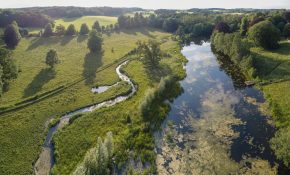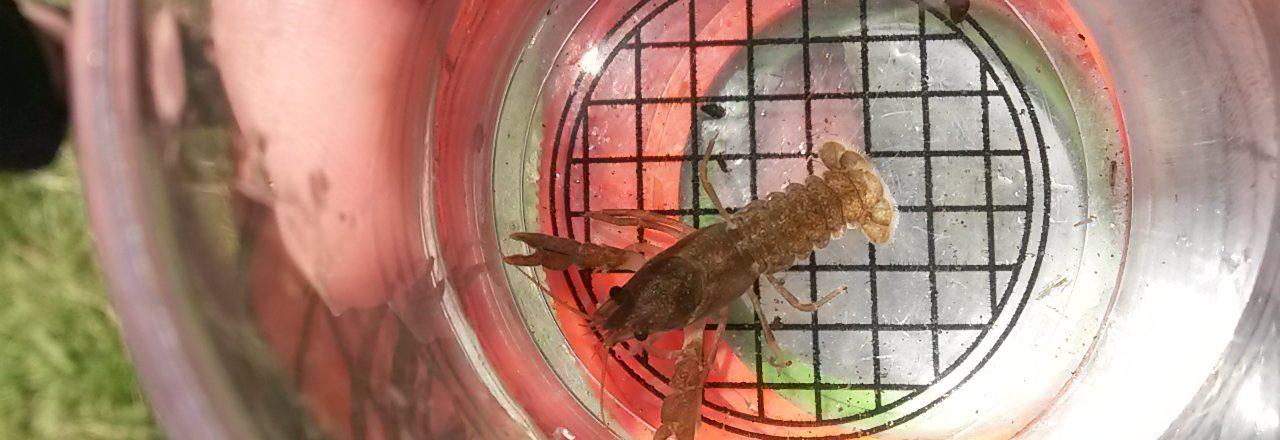Press release: Saving Norfolk’s White-Clawed Crayfish
Friday May 6th, 2022
The Norfolk Crayfish Group and Banham Zoo are working to preserve the last remaining populations of white-clawed crayfish in Norfolk but need public support to safeguard this species and prevent the spread of non-native signal crayfish.
The Norfolk Crayfish Group – made up of key partners including Norfolk Rivers Trust, Environment Agency, National Trust, Norfolk Rivers Internal Drainage Board and the River Glaven Conservation Group – has been set up to address their decline in Norfolk.
Over 11 years, the group have been monitoring the health of remaining native crayfish populations, restoring habitat where they once existed, and introducing them to new ‘ark’ sites – using stock from surviving populations such as from the river Glaven and Yare. Although the white-clawed crayfish are endangered, there is still hope for the species.
Ursula Juta, Education and Catchment Manager at Norfolk Rivers Trust, said:
“We hope that our river restoration and diffuse pollution work – undertaken as part of NRT’s Water Sensitive Farming initiative – will provide improved habitat and water quality for white-clawed crayfish across Norfolk. However, this cannot be done without the best in-channel and river bank habitat management practices in place to allow crayfish to thrive. Native crayfish are found in abundance where large woody tree trunks and roots are left in the river, as well as in undisturbed environments. Our instinct to “tidy” rivers is damaging the ecology of our aquatic environments.”
The Norfolk Crayfish Group continue to look for opportunities to restore degraded habitat and address water quality issues with a view to reintroducing native crayfish, if invasives are absent, however with the encroaching invasion of signal crayfish it is ever more difficult to find suitable habitat.”
The Norfolk Crayfish Group have also been working in partnership with Banham Zoo to establish a crayfish hatchery, with funding support from the government’s Green Recovery Challenge Fund, where bio-secure white-clawed crayfish will be bred and used to restock and bolster existing populations, as well as suitable ark sites.
Sarah Lee, Conservation Manager at The Zoological Society of East Anglia (ZSEA), said:
“We are delighted to be in partnership with The Norfolk Crayfish Group to support the conservation dependant white-clawed crayfish in North Norfolk. Through our collaboration, and after receiving wonderful grant opportunities, Banham Zoo is now poised to go live with our new crayfish hatchery installation and will be introducing crayfish in the next few weeks. We are hopeful this rearing hatchery will significantly increase the numbers of white-clawed crayfish in Norfolk to compliment the fantastic conservation work of organisations such as Norfolk Rivers Trust and ultimately save this fascinating species from local extinction in this region.”
At present, there is no known method for the effective control of invasive signal crayfish, and it is illegal to trap these species; trapping trials have concluded that this only disrupts the population dynamic resulting in a proliferation of smaller crayfish when large crayfish are removed (larger crayfish are cannibalistic and control their own population to an extent). Traps can also capture unintended species including water voles, water shrews and otters, and can act as a vector for many other invasive species including killer shrimp, zebra mussels and floating pennywort.
Kate Warwick, project manager at the Environment Agency, said: “The Environment Agency have been working closely with the Norfolk Rivers Trust and the Norfolk Crayfish group for the last 10 years and are excited to be able to provide a further 20k of funding to help secure a future for this species.
White-clawed crayfish
White-clawed crayfish (Austropotamobius pallipes) are the only native species of freshwater crayfish in the UK, and are also the largest freshwater crustacean. They are also considered a ‘keystone’ species – those which have an extremely high impact on a particular ecosystem relative to its population.
Sadly, native crayfish populations have declined to such an extent that they have been listed as ‘endangered’ throughout their range. This is due to a variety of pressures, but most significant of all has been the introduction of the non-native invasive signal crayfish (Pacifastacus leniusculus). Farmed in Britain since the 1970s, the arrival of this invasive species dealt a double blow for our native species: not only do they predate on white-clawed crayfish, they can also carry the crayfish plague – a disease that spreads rapidly and has a 100% mortality rate in native crayfish. In addition, signal crayfish are faster growing, larger in size and more aggressive. This means that they can outcompete white-clawed crayfish, and lead to complete displacement in most cases.
A further strain on our native crayfish is the degradation of habitat. In Norfolk, we are incredibly fortunate to be home to many of the world’s 210 chalk streams – known for their pure, mineral-rich waters that bubble up from the ground via chalk springs. White-clawed crayfish thrive in clean aquatic habitats, and this is a key reason why Norfolk is one of the few remaining strongholds for the species. However, along with most freshwater habitats, the health of these precious habitats has deteriorated due to human activity including: over-abstraction, sewage, urban and agricultural pollution and physical modification (e.g. dredging, straightening and removing instream habitat such as dead wood, large cobbles and boulders).
What can the public do to help?
To help limit the spread of invasive signal crayfish and the associated crayfish ‘plague’, it’s vital that river users employ a ‘Check, Clean, Dry’ routine for all footwear, clothing and equipment before entering a watercourse, and when moving between waterbodies. More information can be found here.
In addition, spot-on flea and tick treatment can be detrimental to crayfish. Please avoid bathing animals and allowing dogs into rivers soon after application.
You can also report any crayfish traps found in watercourses to the Environment Agency at 0800 807060. Do not move wildlife between watercourses. Signal crayfish sightings can be recorded at: https://irecord.org.uk/
ENDS
Notes to Editor
For further information, please contact:
Georgia Waye-Barker
Evidence and Engagement Coordinator, Norfolk Rivers Trust
[email protected] / 07944443711






